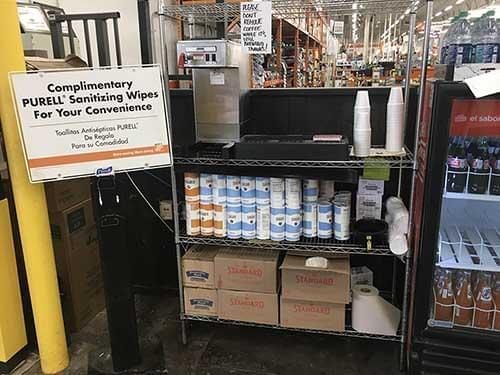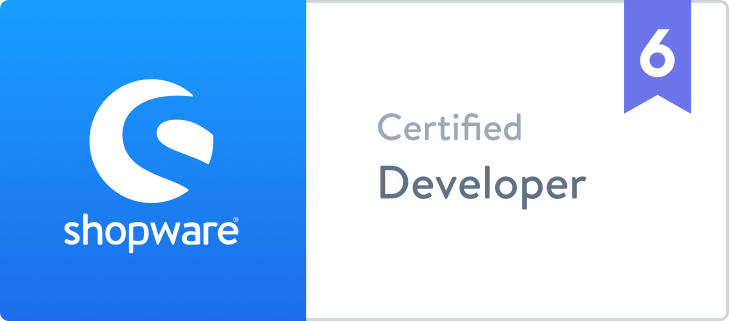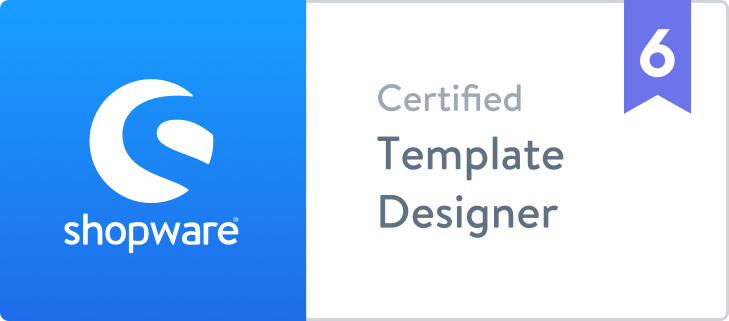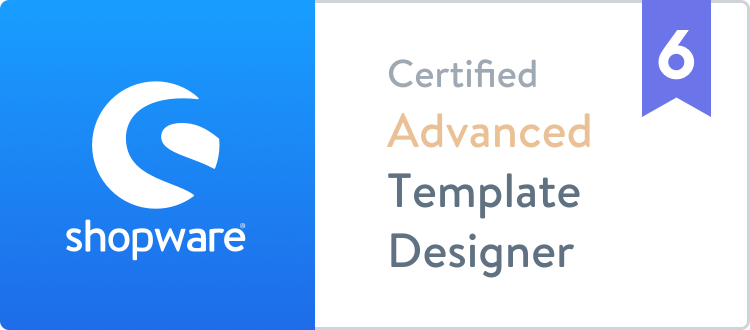
Combat Excess Inventory with NetSuite and LEAN
I took this photo at my local Home Depot home improvement store in the early evening this weekend. It’s located between the cashier and the exit/entry door. This isn’t a break room, it’s for customers. It’s out of the norm for what I expect to see from the largest home improvement store in America, but it is a prime example for us to have...the talk.
Here’s what I see:
- No coffee, no Purell, but there’s plenty of other stuff no one will use.
- Excessive inventory - sugar
- Excessive inventory - creamer
- Excessive inventory - coffee filters
- The soft drinks refrigerator has ⅔ cold storage utilized, meanwhile, there is a number of water bottles at room temperature on top of the refrigerator.
- To the right of the photo, there is a cashier close by, but when she saw I was laughing at this situation, she said “yeah, we’ve had that sugar for over a year”. That’s validation this is excess inventory.
Excess inventory is one of the eight wastes of LEAN methodology. Personally, I find it the hardest to define because it is the most relative waste. It’s relative because of options available to the business at any given time. What is excess inventory for one business is not for another based on their own situation. Let’s see what we can do here to get on the same page regarding excess inventory.
Excess inventory for many businesses could be products you have stock for but never sell or sell so infrequently it’s a burden on your wallet. After all, inventory is your working capital that is on a shelf, in a bin, sitting on a pallet and how fast that inventory moves determines how much work your capital is doing.
I’ve been in the unfortunate situation that I’ve had to describe excess inventory as something you don’t know until you see it. If you walk into a warehouse that has more than a years supply of, that’s excess inventory.
I hope showing you Home Depot’s public coffee station provides some context to excess inventory at your facility.
NetSuite offers a range of tools out-of-the-box, additional modules to extend functionality, and the ability to create custom reports to determine excess inventory or address items that come up as shortages that may plague your business. Improving the management of inventory is not always easy, but there are tools available to help you improve and Rocket Web knows how to use them.
This post is all about training our mind to interpret differently what our eyes see all the time. Let’s figure out how we can do that utilizing ERP tools and some logic.
We can’t just look at something and know it is in excess. Context is required. Pallets of boxes could be replaced every day after picking, packing and shipping orders, or they could be replaced every year. You don’t know by just looking at it. Without the cashier telling me they’ve had the same sugar on the shelf for over a year I wouldn’t know this was excess inventory.
With NetSuite you can create a saved search and dig through the database for sales transactions. If you’re using the popular NetSuite module Advanced Inventory you can see reorder points and build points to determine how similar your inventory is to what your configuration suggests you should have available. If you are using these features and you’re trying to use them better, pay attention to your days lead time values and the results of your sales in quantity per time interval. If you’re using another ERP, or no ERP, see what you can learn about your configuration, but this shouldn’t take a lot of your time to determine. No more than a half a day under any circumstance. If you’re struggling to figure it out, it may be time for a new tool.
Look for low selling products relative to their inventory levels, but be cognisant that nearly everything has seasonality. Use a Transaction type saved search, and sort by date of last purchase order and/or last sales date. Use a join and display inventory for the location you need to analyze.
- Look for common problems by looking at each products first sale date. If it takes a relatively long period of time to get that first sale in the books, discuss it with your team and find out what the process is to get new products up and running. Determine if there are common bottlenecks to post new products. Or maybe you lack a standard process. Many companies do.
- Is there a group of products that don’t sell well? What do they have in common?
- Are there products that have never sold? Why?
Our goal is to turn inventory better. What does better mean? Better means increase the frequency the inventory comes in and goes out. The Rocket Web team helps small-to-mid size enterprises with their NetSuite ERP and these businesses want to free up capital or find new ways to leverage the ERP. Increasing the velocity of inventory turnover is often better, but margin must be taken into consideration to determine frequency of an inventory turn. It’s all for naught if we start losing money by not buying enough per inventory turn. Sometimes, this is more about minimizing lead times rather than working capital improvement(s) but one always affects the other.
Clearly, the answer is relative. Sometimes decreasing frequency of purchases is the best decision a company can make about a product, material, sub-assembly or component which decreases landed cost and increase profit margin without taking cost of capital into consideration. More margin is great, always, but margin happens after we sell the product(s). Inventorying an item always ties up capital, credit, or both. There are alternative supply chain management methods available to be leveraged in NetSuite: drop shipping, and just-in-time inventory.
I want to focus this post on Just-In-Time as it is often done for assemblies by manufacturers in B2B sales. Using this feature, when a customer orders a product they create demand. The NetSuite ERP system automatically orders the component (or sub-assembly) from the vendor as soon as the order is approved. The supplying vendor delivers per the terms you agreed upon, and the warehouse can now assemble the product with all materials in-house.
Rather than stocking all components of a product and tying up capital you are now in a position to let the market pull the product into the market. Having inventory of something usually means you are able to react fastest, however, if you require inventory and have a value-added step to execute (assembly, configuration, treatment, alternative) you may find yourself in a better situation by switching some products (or all of them) to the commonly used B2B Just-In-Time supply chain management method. The benefit is less capital tied to inventory as a whole, pulling in only what is needed on an as-needed basis. These benefits also mean: less inventory on the shop floor, less warehouse space is taken up, faster movement of inventory, fewer holding costs and transportation of the material. Additional results include less likelihood this material will be damaged, out-of-spec, or expire before it’s demanded by your customer. In many situations Just-In-Time results in faster lead time to deliver to the customer.
Let’s look at a fictionalized, real world example. I prefer to talk in terms of where we are, and where we want to be. These are called “Current State” which is where we are, and “Future State” which is where we want to be.
Current State, the way many businesses operate today follows:
- Manufacturer A builds a lot of components in house that they stock.
- Manufacturer A has to order in batches of “25” or more pieces of each component from Supplier B to meet their minimum order quantities or a target price point.
- Manufacturer A orders multiple components from Supplier B.
- Supplier B delivers 100 days later and the product shows up with some scratches or missing some parts.
- Typically, if you have ordered multiple components in quantities of “25” pieces, and two of those components show up with 25 and none show up for the third component, you can’t finish your build. Staff are anxious to work on this work order and deliver on time to keep the company promise to their colleagues in customer service/sales, and to the customer so maybe they start to build and have to stop the line, with parts stuck in sub-assemblies half way through batches...no one wins. One week or more later, we finally have all three components and we can begin building the first unit promised to the customer.
- Results include over-processing, potential defects, with both staff and the customer forced to wait longer than they should.
- Supplier C offers similar components as Supplier B but with higher quality, no minimums and a higher cost.
Future State: Manufacturer A, let’s call them “Rocket Builders” needs to get parts for their rockets from a supplier. When Rocket Builders sells a rocket, the order comes in to the Magento storefront. The NetSuite Connector for Magento passes the order to NetSuite, and NetSuite knows this order is for a rocket, and that the rocket is an assembly. It has the bill-of-materials (BOM) that has the machined parts, sheet metal, and other relevant components. NetSuite doesn’t have a field that says “Just-In-Time”, instead it has the Special Purchase Order Item checkbox on the item record with use of Advanced Inventory module. When enabled, this means that Rocket Builders emails a purchase order automatically to the supplier for the components on the bill-of-materials in the proper quantities for each item sold.
Supplier C, the high quality, more expensive supplier agreed to this “pull system” whereby they get a purchase order from Rocket Builders and agree to deliver “one week” after the order is placed. The components ordered automatically come in a week later, and by no coincidence, Rocket Builders has the other parts available from stock and now they can finish assembly of the rocket.
By leveraging the extensive reporting capabilities of NetSuite, Rocket Builders is able to show Supplier C the projected demand for their components based on past sales history. By clearly showing component demand, Rocket Builders is able to negotiate better rates with Supplier C. To further this example, the financial terms with the supplier are Net30, but since that is from the date the vendor ships, that means you’ve had this inventory on hand for one day from the time you started working with it. It wasn’t sitting on the shelf waiting to be ordered. Truly, you’re working with capital you haven’t spent yet, just committed you will spend with the vendor. This yields improved cash flow for the business.
Rocket Builders routinely had in excess of $100,000 USD of this component category as raw material on the shelf waiting for orders to come in in their make-to-order production system. Meanwhile, Rocket Builders would still have short-term shortages of inventory for some models needed for the customer order. Not just improving stock levels, or saying “buy more” was the strategy to unlock six-figures of inventory from sitting on the shelf, and get capital working faster and harder. This had to be turned on in a phased approach as we intentionally planned to decrease inventory levels for models to set volumes. Another benefit was no longer trying to predict the future of how much of any given inventory should be held on hand four months from now.
NetSuite offers users the ability to gain actionable insight to their data through the use of its included and easy-to-use business intelligence tools. Automated purchasing, demand planning, controlling inventory levels are all possible within NetSuite. If you have a value-added step in your process where you transform the materials you buy and make them worth more to someone else, that is often something we drive with the NetSuite Assemblies and Work Orders module.
If you’re in operations, think of how many more smiles your controller and CFO will give you if you bring an idea like this to them that can be executed. Smiles are never in excess in my book.
Rocket Web is the #1 digital agency for Magento storefronts with a NetSuite back office. The company connects these two systems through a robust and proprietary NetSuite Connector for Magento.









